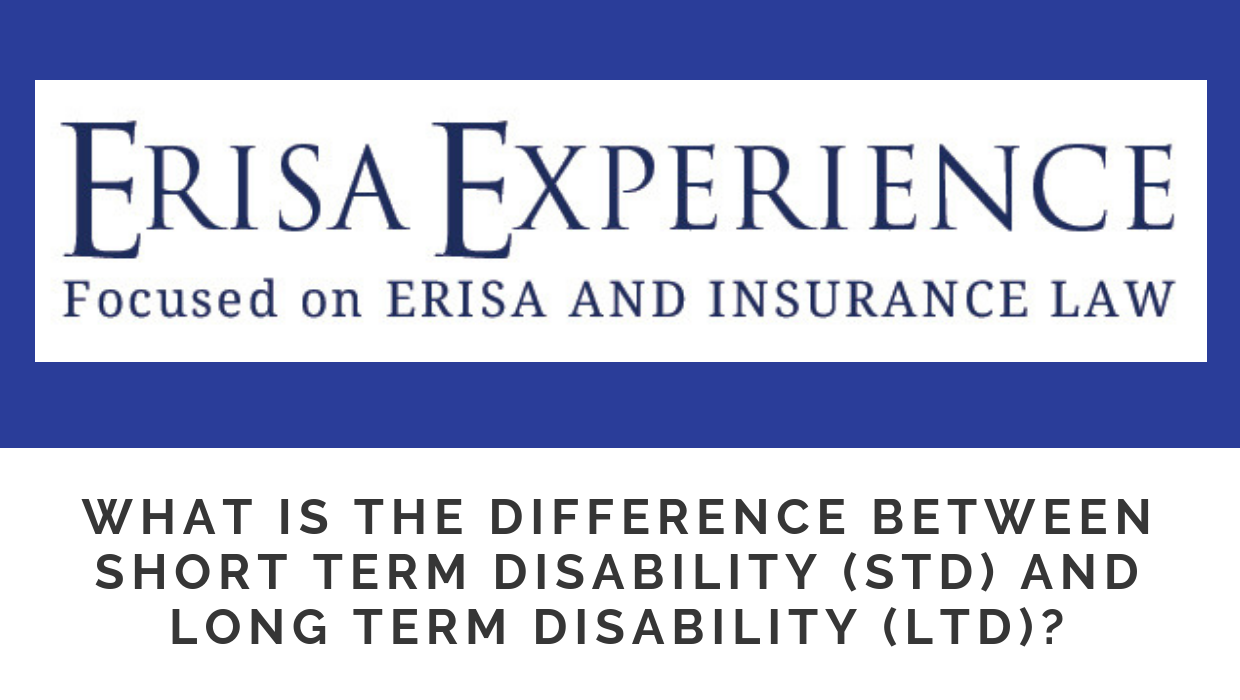
I am writing this post because I think it is important for clients and potential clients to be able to distinguish between a claim for STD (short term disability) benefits and a claim for LTD (long term disability) benefits. An individual should file a STD claim when he/she anticipates being out of work for a limited period of time. There is a vast difference between different types of STD plans. In order to qualify for STD benefits, an individual needs to be continuously totally disabled for 7 to 14 days (depending on the policy) before STD benefits begin. Short term disability plans generally pay benefits for 26 weeks. Some STD plans, however, pay for shorter periods of time, and some pay for longer periods of time.
Long term disability benefits are for individuals who are going to be out of work for longer periods of time. LTD benefits generally begin after STD benefits end. Therefore, in order to qualify for LTD benefits, an individual needs to be continuously disabled for 90 days, 180 days, or sometimes longer (again, depending on the policy). LTD plans generally pay to age 65 or an individuals’ Social Security Normal Retirement Age.
If an individual has a claim for short term disability benefits and anticipates being out beyond the end of what the STD policy pays, it is imperative that he/she contact the insurance carrier to institute a claim for long term disability benefits. The reason it is so important is because the LTD claim will likely require a separate claim process and may require completion of LTD claim forms. In some plans, the STD “automatically rolls over” into the LTD claim, and no separate forms are required. Even if this is the case, however, the insurance company will still perform a new LTD eligibility review. In a perfect world, the process would be seamless and LTD benefits would begin the day after STD benefits end. This is rarely the case, however, as the insurance company will perform a completely separate eligibility review on the LTD claim which will cause delays in payment. Therefore, it is extremely important to institute the LTD process as soon as it becomes apparent that an absence from work will extend longer than the STD payment period.
If an individual is unsure as to whether or not he/she will be out of work long enough for the STD claim to become a LTD claim, apply for LTD benefits anyway. It is better to be safe than sorry, and the quicker LTD benefits are applied for the less of a gap in payment there will be between the ending of the STD claim and the beginning of the LTD claim.
If you have a denied short term disability claim or long term disability claim, please do not hesitate to contact me at 864-242-6200 or llouzri@fosterfoster.com.
Read more about Social Media and Short Term/Long Term Disability Claims.
|
864.242.6200
|
|
25 Mills Avenue
Greenville, SC 29605 |
|
864.233.0290
|